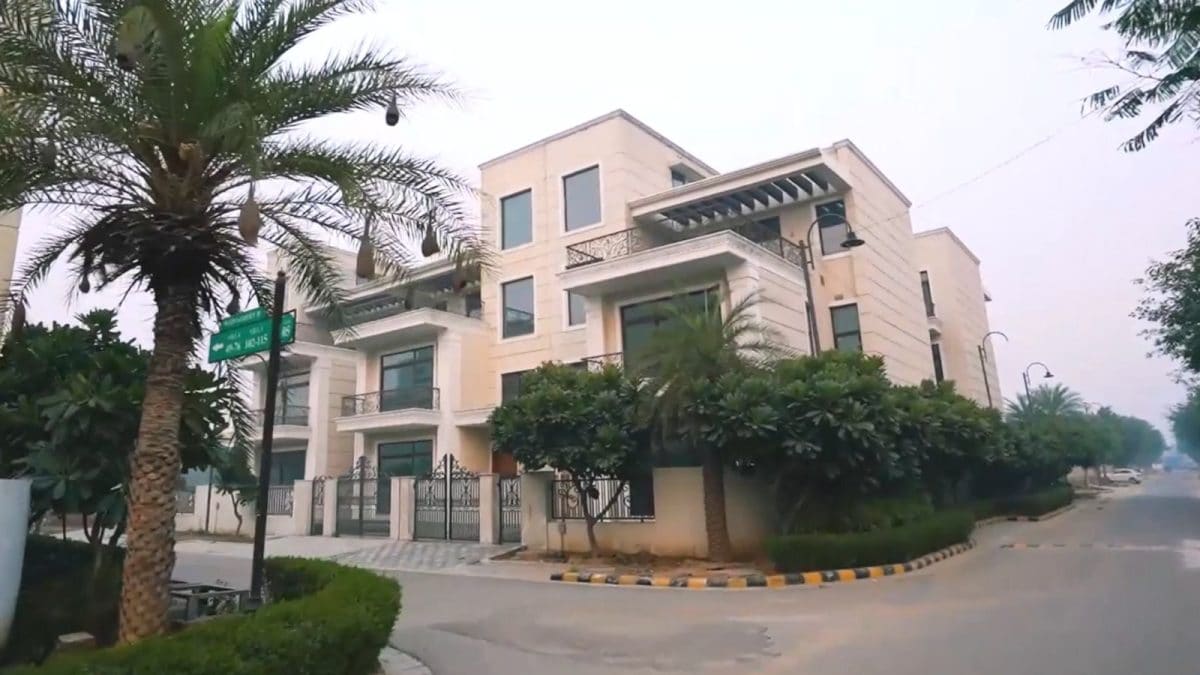Business
ITR filing FY 2024-25 due date today: Income tax portal still facing glitches despite deadline extension? What taxpayers are saying – The Times of India

ITR filing FY 2024-25 due day has been extended to today, that is September 16, 2025, but taxpayers are complaining of still facing issues with the income tax e-filing portal.Following the Finance Ministry’s extension of the ITR filing deadline from September 15, 2025, to September 16, 2025, taxpayers initially felt relieved about meeting the submission deadline without incurring penalties – but even after the portal was back after its scheduled maintenance, taxpayers took to social media to vent their frustrations about continued issues.According to an ET report, taxpayers continue to struggle with the ITR submission process due to technical difficulties on the Income Tax department‘s official portal.
ITR filing due date extended: Tax portal glitches continue?
Several taxpayers expressed their concerns via social media, rueing that the single-day extension offered insufficient time, and requested the Finance Ministry for an additional extension of the submission date.Across social media platforms, taxpayers are expressing their discontent and irritation regarding the technical issues they are encountering on the ITR filing portal.The Finance Ministry announced an extension of the ITR deadline through an X post at 11:48 PM on September 15, 2025. They advised that the e-filing portal would undergo maintenance from 12:00 AM to 02:30AM on September 16, 2025, to implement necessary utility modifications.A user named Ravi Kumar wrote on X (formerly Twitter): “It hasn’t been working since the extension. They mentioned maintenance until 3:00 AM, but it’s still not working. Not sure why the date extended when it’s not working?”Another user, Ajit Jha raised concerns about Section 234F late fees appearing during return submission. He noted: “Sir, the utility has not been updated and a late fee under Section 234F is being reflected at the time of uploading the return.”Saurabh Gupta, an advocate, raised concerns about the persistent issues with the tax portal, commenting: “HELP THE PROFESSIONALS DON’t HARASS THEM. ITR Potral has in same condition as it was yesterday. What is the benefit of EXTENSION?”Chartered Accountant Himank Singla reported experiencing technical difficulties, indicating that his IncomeTaxIndia Portal was not functioning.
Income Tax Department shares some quick fixes
On Monday evening, the Income Tax Department’s X handle shared a list of quick fixes for taxpayers facing glitches in accessing the e-filing portal. According to the I-T Department, some issues may arise due to local system/browser settings.
- Delete temporary files → Press Win + R → type temp and %temp% → delete all files.
- Clear browser cache & cookies → Go to Browser Settings → Clear browsing data (cache + cookies)
- Use a different/supported browser → Latest version of Chrome or Edge.
- Open in Incognito/Private Mode → Shortcut: Ctrl+Shift+N OR Ctrl+Shift+P (Firefox
- Disable browser extensions → Especially ad-blockers or privacy tools.
- Update your browser → Ensure you are on the latest version.
- Try a different network → Switch to another Wi-Fi or mobile hotspot.
According to the tax department, if you experience problems accessing the Income Tax e-Filing Portal, this could be related to your local system or browser configuration. A series of straightforward troubleshooting procedures can typically address these access issues.
ITR filing: What is the penalty for returns submission after due date?
Deloitte India Partner Aarti Raote advises utilising this additional time, noting significant consequences for late filing.Raote said, “The first is a penalty of up to Rs 5,000 for delayed filing. In addition, there would be interest of 1% on the amount of taxes unpaid for each month till the return is filed. Further, one would lose the chance to carry forward current year losses like capital losses if the return is filed beyond the due date. These losses would otherwise be available for set-off against gains of future years. A bigger implication is also that one loses the right to switch to the tax regime that is more favourable to them and hence may land up paying a higher tax.“She further said, “In addition to the above financial implications, one should expect refunds slower and tax payers could be at a higher risk of receiving notices and scrutiny by the tax department also. They may also face the risk of scrutiny. Thus, it is ideal that the tax returns are filed in time.”
Business
Security concerns over system at heart of digital ID

The government is facing questions over whether the system at the heart of its plans for digital ID can be trusted to keep people’s personal data secure.
Digital ID will be made available to all UK citizens and legal residents but will only be mandatory for employment, under the government’s proposals.
Full details of how the system will work have yet to be announced but Prime Minister Sir Keir Starmer has insisted it “will have security at its core”.
It will be based on two government-built systems – Gov.uk One Login and Gov.uk Wallet.
One Login is a single account for accessing public services online, which the government says more than 12 million people have already signed up to.
By this time next year that might be as many as 20 million, as people registering as company directors will have to verify their identity through One Login from 18 November.
Gov.UK Wallet has not yet been launched but it could eventually allow citizens to store their digital ID – including name, date of birth, nationality and residence status, and a photo – on their smartphones.
Users will need a Gov.UK One Login to access the wallet.
Last month, the government launched a digital identity card for military veterans to test the concept.
The government hopes to avoid security issues by keeping the personal details to be accessed through One Login in individual government departments rather than in a single, centralised database.
But veteran civil liberties campaigner and Conservative MP David Davis has raised concerns about potential flaws in the design and implementation of One Login that he says could leave it – and the new digital ID scheme – vulnerable to hackers.
Speaking in a Westminster Hall debate earlier this month, he said: “What will happen when this system comes into effect is that the entire population’s entire data will be open to malevolent actors – foreign nations, ransomware criminals, malevolent hackers and even their own personal or political enemies.
“As a result, this will be worse than the Horizon [Post Office] scandal.”
Davis has written to spending watchdog the National Audit Office calling for an “urgent” investigation into the cost of One Login, which he says is certain to rise above the £305m already earmarked for it.
In his letter, the MP highlights a 2022 incident, in which it was found that the One Login system was being developed on unsecured workstations by contractors without the required security clearance in Romania.
Davis also points out that One Login does not meet the government’s own requirements to be classified as a safe and trusted identity supplier.
The government has blamed a supplier for allowing its Digital Identity and Attributes Trust Framework certification to lapse earlier this year and says it is working towards it being restored, which will happen “imminently”.
Separately, Liberal Democrat technology spokesman Lord Clement-Jones has questioned whether One Login meets National Cyber Security Centre standards.
The peer says he has been speaking to a whistleblower, who claims that the government has missed the 2025 deadline set out in its national cyber security strategy for hardening “critical” systems against cyber attacks.
Ministers deny this but the Lib Dem peer said he had been told by an official that One Login would not pass the required security tests until March 2026.
The whistleblower also highlighted an incident from March this year, when a so-called “red team” tasked with simulating a real life cyber attack was reportedly able to gain privileged access to One Login systems.
The Department for Science, Innovation and Technology (DSIT) says it is unable to give details of the red team exercise for security reasons but says claims that its systems were penetrated without detection are false.
DSIT officials also assured Lord Clement-Jones that the subcontractors in Romania were “a handful of people” none of whom had access to production “and all code was checked”.
The department says all members of the team working on One Login use “corporately managed” devices which are monitored by a security team to detect any malicious activity.
But Lord Clement-Jones told the BBC he was not convinced by the department’s assurances.
He said the track record of successive governments of running One Login and other systems “should give us all no confidence at all that the new compulsory digital ID, which will be based on them, will ensure that our personal data is safe and will meet the highest cybersecurity standards”.
Last week, the prime minister handed overall control of the digital ID scheme to the Cabinet Office, which is headed by one of his most trusted and senior ministers Darren Jones, reflecting its importance to the government.
But the Government Digital Service, which is part of DSIT, will retain responsibility for design of the project.
A DSIT spokesperson said: “Gov.UK One Login continues to deliver for citizens across the UK.
“One Login is now home to more than 100 services and has been used by more than 12 million people – representing almost a sixth of the UK population.
“One Login follows the highest security standards used across government and the private sector and is fully compliant with UK data protection and privacy laws.
“The system undergoes regular security reviews and testing, including by independent third-parties, to ensure security remains strong and up to date.”
Business
Hurricane Melissa set to trigger $150 million Jamaica catastrophe bond to help rebuild

Drone view of damage to coastal homes after Hurricane Melissa made landfall, in Alligator Pond, Jamaica, Oct. 29, 2025.
Maria Alejandra Cardona | Reuters
Hurricane Melissa, the most powerful Atlantic hurricane of the year, made landfall this week as a Category 5 storm in Jamaica. The strength of the storm means it will likely trigger a full payout from a catastrophe bond designed to provide funds to the island in the event of catastrophic weather events.
The $150 million catastrophe bond, structured by Aon, is intended to help the island’s people rebuild after natural disasters by providing Jamaica parametric coverage against losses from named storms. The policy took effect this year and lasts through 2027.
The government of Jamaica is the first government in the Caribbean region, and the first of any small island state, to independently sponsor a cat bond, according to Aon. Its likely payout demonstrates the value of a unique type of backstop funded by the private markets.
In order to trigger the full payment, the storm has to meet a particular strength criteria. The central pressure of the storm must be at or below 900 millibars as its makes landfall and crosses the island nation.
Early data from the National Hurricane Center shows Hurricane Melissa’s pressure stayed below 900 millibars in several areas. Those readings are in the process of being verified by an independent calculation agent.
“While the final numbers are still being verified, the early signs suggest the transaction is doing what it was designed to do: getting critical funds to the country quickly after a major disaster,” Chris Lefferdink, Aon’s head of insurance-linked securities for North America, said in a statement.
The review process typically takes 2 to 3 weeks, and the earliest possible payout to Jamaica could come in approximately 1 month, according to a spokesperson from Aon.
A drone view shows an affected area after Hurricane Melissa made landfall, in Crane Road, Black River, Jamaica, October 30, 2025.
Maria Alejandra Cardona | Reuters
Previous parametric transactions payouts have taken 3 months or more, but for this event Aon used an innovative data source to enable faster payments.
The catastrophe bond was placed using the International Bank for Reconstruction and Development’s “capital at risk” program, which is used to transfer the risks associated with natural catastrophes to the capital markets, allowing the country to access funds quickly after a major event.
“What you have is a capital provider putting funds in the pool, an insurer putting the coupon for those funds in the pool [and] if the storm hits that criteria, they get the money in a much quicker fashion,” Aon CFO Edmund Reese told CNBC’s Contessa Brewer in an interview.
Damaged furniture and debris after Hurricane Melissa made landfall, in Black River, Jamaica, Oct. 30, 2025.
Octavio Jones | Reuters
Catastrophe bond and insurance-linked securities were created in the mid 1990s in the wake of Hurricane Andrew’s destruction. They’ve since grown in popularity, with the cat bond market growing by over 50% since the end of 2022 to nearly $55 billion.
“Public-private partnerships like Jamaica’s continue to highlight how parametric insurance can deliver rapid, transparent relief in the wake of severe storms,” Lefferdink said.
Jamaica very narrowly missed the requirements necessary to receive a payout from a separate cat bond when Hurricane Beryl battered the island in 2024, resulting in $995 million in damages to homes, crops and infrastructure, according to the National Hurricane Center.
Business
Move Over Dwarka Expressway, This Gurugram Area Is Hot Property For Homes Now

Last Updated:
Residential prices in this area are presently in the range of Rs 10,000-12,000 per sq ft, making it almost 2.3 times more affordable than other premium micro-markets in Gurugram

Sector 63A, located along the Golf Course Extension Road, is home to projects like Anant Raj Estate by Anant Raj Limited.
The dream of owning a home in Gurugram has long been associated with soaring property prices and premium localities like Golf Course Road or Dwarka Expressway. However, a new report by global real estate consultancy Colliers has brought a fresh perspective; Sohna, once known as an affordable pocket on the city’s outskirts, has now outperformed Gurgaon’s most expensive corridors in terms of property price growth.
According to the Colliers report, Sohna Road has topped the list of the five fastest-growing micro-markets in Gurgaon. Property values in the region are projected to rise by nearly 1.6 times in the coming years, making it one of the most promising investment destinations in the National Capital Region (NCR).
The report highlights that Sohna commands the highest share of graded housing units, about 73% of the total in NCR. The micro-market is witnessing a steady rise in new residential supply, alongside regions such as Golf Course Road, Golf Course Extension Road, Southern Peripheral Road (SPR), and Dwarka Expressway.
Experts attribute Sohna’s rise to massive infrastructure developments in the region. The upcoming IMT Sohna industrial hub, enhanced connectivity through the Delhi-Mumbai Expressway, proximity to National Highway networks, and the proposed dual airport linkage have all contributed to the area’s rapid transformation. Moreover, the 10,000-acre Aravalli Jungle Safari project is expected to further enhance Sohna’s appeal as a green and lifestyle-centric investment zone.
The location also enjoys strong accessibility; just about 40 minutes from Gurugram’s Cyber Hub and Golf Course Road, and under an hour from Delhi’s Indira Gandhi International (IGI) Airport.
Currently, Sohna houses around 8,200 residential units, of which nearly 45% remain available in the primary market. Analysts say this reflects a healthy absorption rate and sustained buyer interest. Residential prices along the Sohna Expressway are presently in the range of Rs 10,000-12,000 per sq ft, making it almost 2.3 times more affordable than other premium micro-markets in Gurgaon.
Sohna Master Plan 2031
The ongoing development under the Sohna Master Plan 2031 envisions integrated residential, commercial, and industrial growth. The plan positions Sohna as a balanced hub catering to both affordable and mid-segment housing needs, complementing the high-end corridors such as Golf Course Extension and SPR.
Sohna’s growing industrial base, affordable housing options, and rapidly improving infrastructure are drawing both home buyers and investors seeking long-term appreciation.
Apart from Sohna, the top five growth corridors in Gurgaon include Golf Course Extension Road, Golf Course Road, Dwarka Expressway, and SPR. Among them, the Golf Course Extension Road continues to dominate the luxury segment, thanks to its connectivity with the Delhi-Mumbai Expressway, Sohna Road, and the Delhi airport.
Sector 63A, located along the Golf Course Extension Road, is home to projects like Anant Raj Estate by Anant Raj Limited, which epitomise premium urban living in the NCR.
October 31, 2025, 18:29 IST
Read More
-

 Politics6 days ago
Politics6 days agoTrump slams ‘dirty’ Canada despite withdrawal of Reagan ad
-

 Tech1 week ago
Tech1 week agoDefect passivation strategy sets new performance benchmark for Sb₂S₃ solar cells
-

 Business1 week ago
Business1 week agoJLR shutdown after cyber hack drives slump in UK car production
-

 Tech1 week ago
Tech1 week agoTurning pollution into clean fuel with stable methane production from carbon dioxide
-

 Sports1 week ago
Sports1 week agoAlleged mob ties in NBA scandal recall La Cosa Nostra’s long shadow over sports
-

 Sports1 week ago
Sports1 week agoNBA legend Chauncey Billups, Heat’s Terry Rozier arrested as part of FBI gambling probe
-

 Business1 week ago
Business1 week agoAssaults on rail network more than triple in 10 years
-

 Business1 week ago
Business1 week ago47.7% of Mutual Fund Assets Now Invested Directly, ICRA Analytics Says











